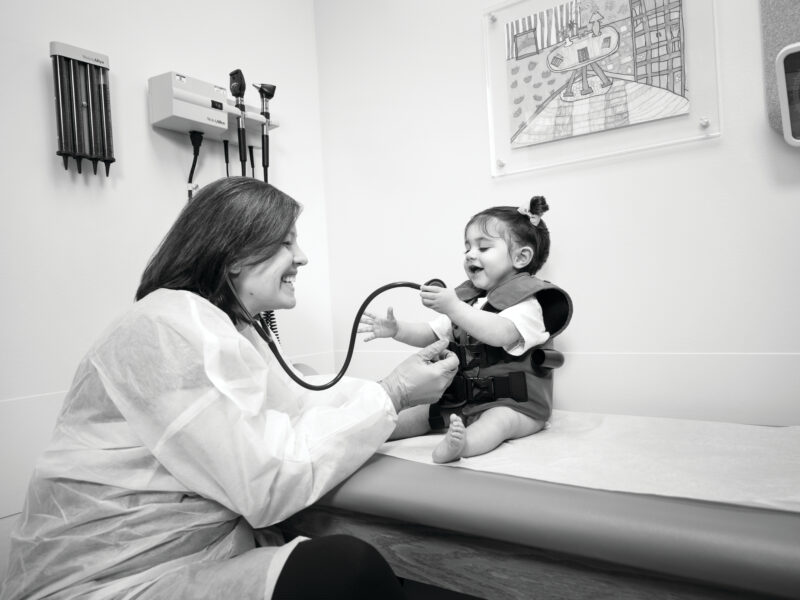Increasing the Use of the Teach-Back Method in Asthma Education
Increasing the Use of the Teach-Back Method in Asthma Education https://pediatricsnationwide.org/wp-content/uploads/2021/03/021921BS0013-header-1024x575.jpg 1024 575 JoAnna Pendergrass, DVM JoAnna Pendergrass, DVM https://pediatricsnationwide.org/wp-content/uploads/2021/03/pendergrass_01.jpg- March 01, 2021
- JoAnna Pendergrass, DVM

A standardized approach to asthma education using the teach-back method helps respiratory therapists effectively address common issues with asthma management in pediatric patients.
For the 8% of children and adults in the United States who have asthma, effective asthma education is essential to adequate disease management.
Unfortunately, written asthma action plans (AAP) alone may be insufficient because of patients’ variable health literacy skills. Adding in verbal instruction can improve patient understanding and ultimately reduce asthma morbidity and mortality.
Teach-back is an educational method in which the patient explains, in their own words, the health care provider’s instructions. The provider can then determine the patient’s level of understanding and clarify the instructions if necessary.
In a recent Journal of Asthma publication, Lisa Ulrich, MD, an attending in the Section of Pulmonary Medicine at Nationwide Children’s Hospital, and her research team reported increased use of the teach-back method during asthma visits — from 42.7 to 82.3% — in the hospital’s pediatric pulmonary clinic.
“We feel strongly that patients and their families benefit from teach-back education,” says Dr. Ulrich. “Our ultimate goal will be to include teach-back education in 100% of visits.”
Using a quality improvement approach, the research team tracked teach-back usage by the clinic’s respiratory therapists (RT) during 6,522 asthma visits from January 2017 to December 2019. Clinic patients with asthma and without a tracheostomy or cystic fibrosis were included in the study.
A multidisciplinary group within the clinic first developed a process for implementing teach-back education. They identified four key drivers that would most significantly impact teach-back success: provider buy-in, communication clinic and flow, RT buy-in and time constraints, and RT documentation.
The group then created interventions, such as optimizing teach-back timing during visits, to address the drivers. The drivers were continually evaluated, and adjustments to interventions were made as needed.
A lung icon, indicating the need for teach-back education, was automatically added from the patients’ electronic medical records (EMR) to the clinic’s scheduling roster.
The RTs were educated on teach-back, which included verbal instruction on inhaler technique and discussion of asthma scenarios (e.g., For a sleepover, what does your child need for their asthma?).
RTs were then assigned 1:1 with clinic providers. Based on RT survey responses during the study, teach-back education on inhaler technique occurred early in the visits, followed by scenario teach-back and the RT’s review of the patient’s AAP.
Increasing teach-back education not only increased patient family confidence and satisfaction, according to Dr. Ulrich. There was also a decline in emergency department visits by clinic asthma patients by 10.1% during the study period.
The COVID-19 pandemic necessitated a rapid shift to teach-back education via telemedicine. Good communication between the RTs and clinic providers made this shift possible, notes Dr. Ulrich.
Smaller institutions, including non-pulmonary clinics and primary care clinics, might face challenges in implementing and tracking teach-back education. However, effective asthma education is still possible in these settings.
“No matter how busy your clinic is, a formal, standardized process for asthma education can be provided to your patients,” says Dr. Ulrich. Doing so, she notes, can help patients and their families feel more confident about asthma management.
Reference:
Ulrich L, Michael W, Amy H, Elizabeth A. Quality improvement approach to increasing respiratory therapist driven teach back style asthma education. Journal of Asthma. 2021 Jan 16.
Image credit: Nationwide Children’s
About the author
JoAnna Pendergrass, DVM, is a veterinarian and freelance medical writer in Atlanta, GA. She received her veterinary degree from the Virginia-Maryland College of Veterinary Medicine and completed a 2-year postdoctoral research fellowship at Emory University’s Yerkes Primate Research Center before beginning her career as a medical writer.
As a freelance medical writer, Dr. Pendergrass focuses on pet owner education and health journalism. She is a member of the American Medical Writers Association and has served as secretary and president of AMWA’s Southeast chapter.
In her spare time, Dr. Pendergrass enjoys baking, running, and playing the viola in a local community orchestra.
-
JoAnna Pendergrass, DVMhttps://pediatricsnationwide.org/author/joanna-pendergrass-dvm/
-
JoAnna Pendergrass, DVMhttps://pediatricsnationwide.org/author/joanna-pendergrass-dvm/
-
JoAnna Pendergrass, DVMhttps://pediatricsnationwide.org/author/joanna-pendergrass-dvm/
-
JoAnna Pendergrass, DVMhttps://pediatricsnationwide.org/author/joanna-pendergrass-dvm/
- Post Tags:
- Asthma
- Pulmonary Medicine
- Posted In:
- In Brief










